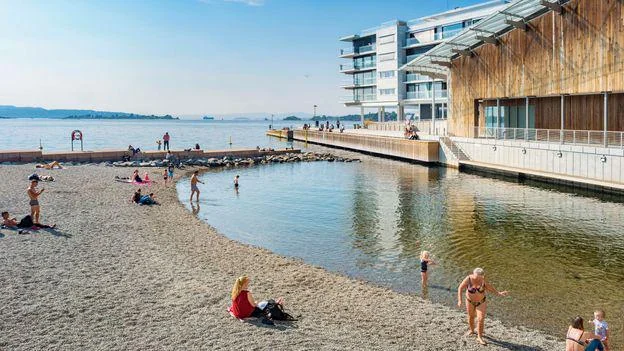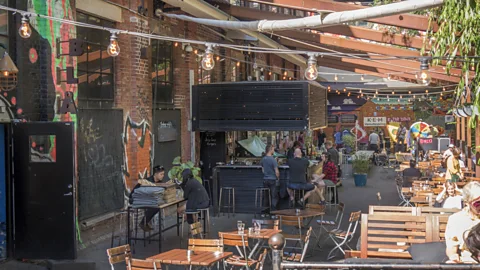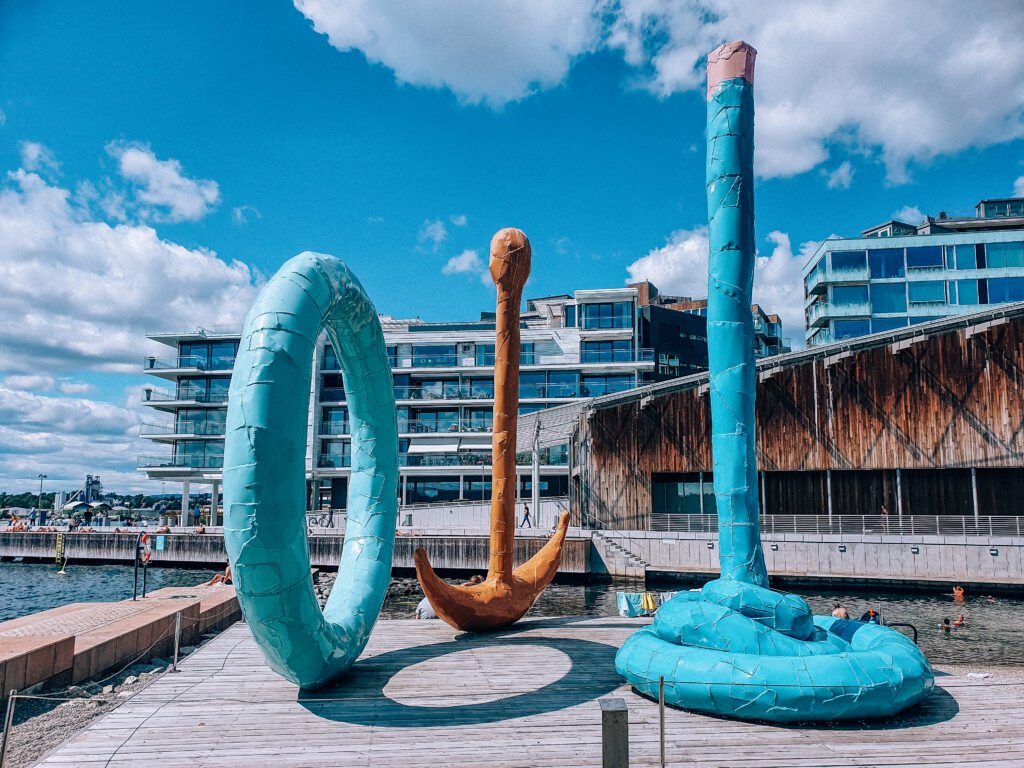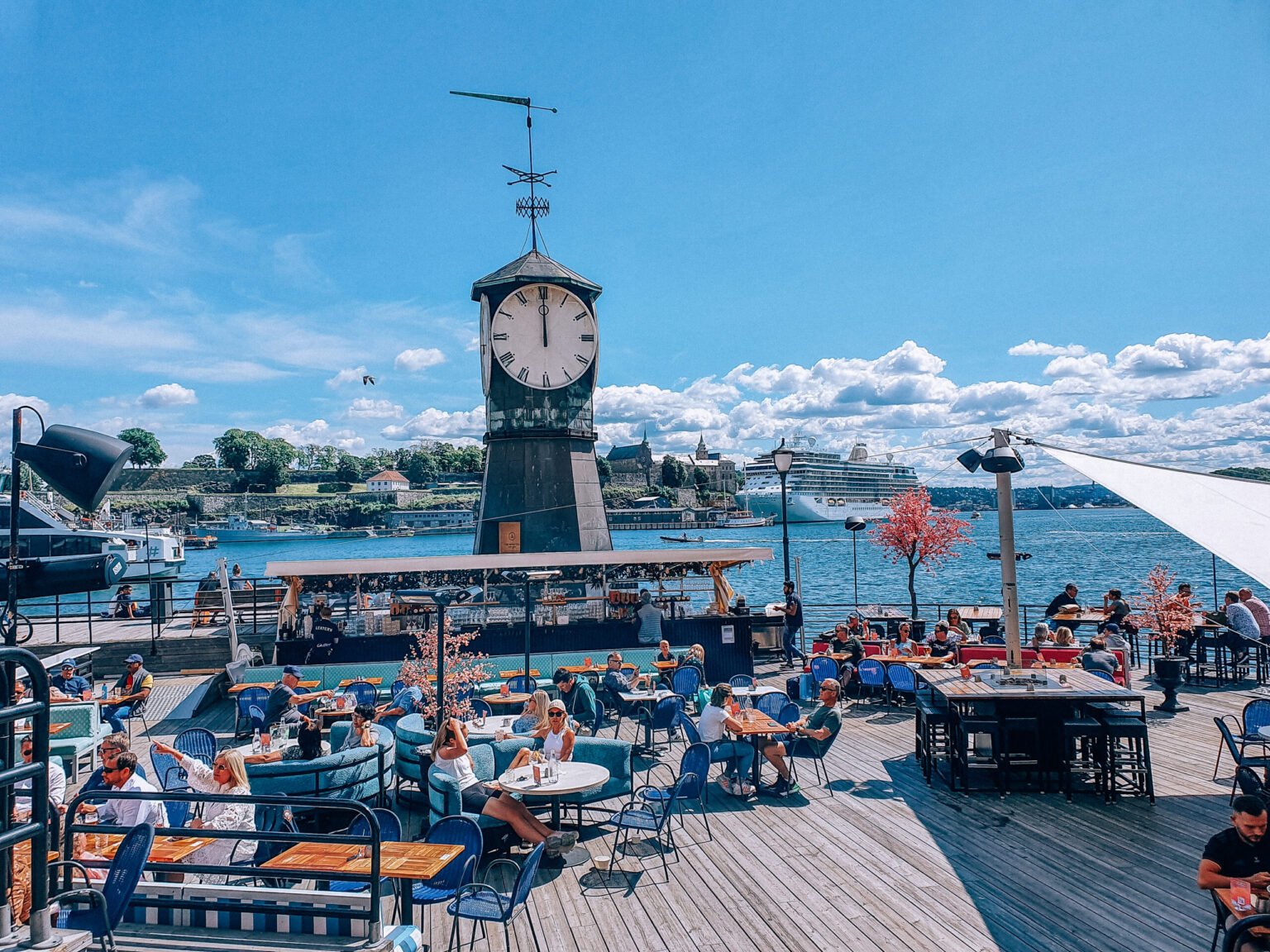Oslo City Break: Exploring Vulkan, the Walkable Green Hub

If you’re searching for a city break that effortlessly combines culture, comfort, and cutting-edge sustainability, Oslo might just surprise you. This Oslo city break explores how the Norwegian capital delivers a uniquely tranquil experience, seamlessly blending innovation with daily ease. From geothermal-powered neighborhoods to all-electric transport systems, the city has redefined what it means to live—and travel—well.
Starting Your Oslo Escape: Walkable Vulkan and Urban Renewal
I began my 24-hour Oslo experience in Vulkan, a revitalized industrial zone now transformed into one of Europe’s most forward-thinking urban villages. Nestled along the Akerselva River, Vulkan is packed with culture, cuisine, and creativity. The square buzzed with locals enjoying coffee and conversation, while eco-conscious vendors stocked up for the evening rush. From concert venues to climbing gyms, the energy was palpable.
Vulkan’s design and ethos are rooted in sustainability. Once a derelict area, it has been reborn with geothermal wells, solar panels, and zero-emissions infrastructure. It’s a neighborhood built for the future, yet fully grounded in the present, showing just how impactful conscious city planning can be.
Oslo City Break Highlight: History Reimagined from Foundries to Food Halls
This area wasn’t always inviting. Just two decades ago, Vulkan was a gritty, abandoned space full of broken glass and graffiti. Everything changed in 2004 when developers Aspelin Ramm and Anthon B Nilsen began reimagining the area. By 2008, Dansens Hus—the country’s national contemporary dance theatre—opened. Mathallen followed in 2012, becoming Norway’s first modern food hall housed in a former ironworks building.

Today, Mathallen features over a dozen eateries and shops. I indulged in local oysters, bao buns, handmade cacio e pepe, and freshly brewed beer. Just steps away is the Vulkan Arena, which regularly hosts international artists and offers another layer to the area’s cultural texture.
Urban Innovation in Oslo: A City Break Model for Sustainable Living
But Vulkan is more than just lively—it’s a living example of urban sustainability. The geothermal wells that run beneath the square, the rooftop solar panels, and buildings designed for maximum energy efficiency demonstrate that eco-friendly living doesn’t mean sacrificing comfort.
The neighborhood even includes the 149-room Scandic Vulkan hotel, certified as Norway’s first EU energy class A hotel. Rooftop beehives support biodiversity and produce fresh, local honey served just meters away. All this takes place within a compact 9,400 sq m footprint—roughly the size of a single city block—proving that small spaces can yield big results.
Oslo’s Electric Charm: Citywide Clean Transport
Leaving Vulkan, Oslo’s commitment to sustainability continues throughout its city core. Since 2017, only electric vehicles are allowed within the city center, reducing noise and pollution. Streetcars and bicycles glide through traffic-free streets, and the air feels crisp and breathable.

The absence of combustion engines lends Oslo a serene, open atmosphere rarely found in capital cities. It’s not just transportation—it’s a lifestyle. And it’s one that feels incredibly accessible.
Bigger Picture: Vulkan as a Symbol of Oslo’s Vision
Vulkan isn’t an isolated success; it mirrors a national movement. Norway is aiming for carbon neutrality by 2030 and net-zero emissions by 2050. The Oslo city break experience provides a glimpse into this forward-thinking ambition, where even tourism aligns with long-term sustainability goals.
Every aspect of the neighborhood—from architecture to energy use to cultural programming—echoes the city’s values: smart density, eco-consciousness, and quality of life. Vulkan distills those values into a compact, walkable space that perfectly captures Oslo’s essence.
A Floating Sauna and the Art of “Life-Seeing”
To cap off my stay, I headed to Bjørvika, another revitalized district that represents Oslo’s dedication to multifunctional urban space. There, I experienced a quintessential Nordic ritual: a floating sauna on the Oslofjord. Moving between steaming wooden cabins and icy waters, I felt fully immersed in the Norwegian way of living.
In a world obsessed with fast-paced travel, Oslo encourages something different. Their 2024 tourism campaign invites visitors to “life-see” rather than simply sightsee. This Oslo city break delivered exactly that—a chance to slow down and appreciate thoughtful, human-scale design.
Final Thoughts: Why Oslo Deserves the Spotlight
Oslo may not be the first city that comes to mind for a quick getaway, but it’s exactly that unpredictability that makes it so rewarding. It’s a capital that dares to be calm, clean, and quietly radical in how it reinvents urban life. Whether you’re drawn by the geothermal tech, cultural richness, or just the clean air, this Oslo city break proves that the city is far more than just a stopover.
It’s a blueprint for the sustainable cities of tomorrow—one square, one street, and one floating sauna at a time.




